Books
I began book-writing seriously in 1985 in preparation for Pope John Paul II’s first visit to Australia in 1986. The resulting book, Mixed Blessings was a kind of report card on Catholicism in Australia and the wider world as the pope prepared to come ‘down under’. Penguin picked up the book and I was lucky to have the late John Curtin as my first editor; he took what was a series of disparate chapters and wove them into a book. He also took the time out to guide me in the art of writing a successful non-fiction book.
There are two other people who taught me how to write. One was a school teacher I had back in the late-1950s in the junior seminary, Father John McMahon, who insisted that we students write an essay of no more than 200 words every weekend arguing a specific point of view. Often the essays came back with more red comments than the length of the essay itself, drilling in lessons in logic, clarity and brevity. My other mentor was my PhD supervisor, the Irish historian and biographer of Daniel O’Connell, Professor Oliver MacDonagh of the Research School of Social Sciences at the Australian National University. As well as clarity and brevity, Oliver emphasized the importance of style and elegance of language. Teachers like McMahon and MacDonagh, both dead now, are rare gifts and I am much in their debt.
People often ask me ‘How do you become a writer?’ I can only speak as a non-fiction hack with thirteen published books. My experience is that you usually begin with a good idea, story, subject, or something you want to say. You then need to research your topic diligently and get the basic facts straight. It is only then that you plant your backside on a chair and begin to write. There are no short-cuts and writing is sheer hard work and you spend a lot of time in isolation. Writing requires silence, self-discipline and extended periods of concentrated commitment. And all of this presupposes that you can write coherent, grammatically-correct English in the first place. Don’t expect others to do this for you; you have to find your own ‘voice’. When you’re writing always try to extend your vocabulary; use a thesaurus to discover alternative words and synonyms. The Oxford Quick Reference Thesaurus is a good place to start. Strive always for clarity, simplicity and brevity. It is what distinguishes English from the Romance languages like French, Italian and Spanish.
Good non-fiction depends on research and careful checking and cross-checking. Obvious mistakes and howlers in a non-fiction book turn readers off and give reviewers a chance to tear shreds off you. Trust me: they won’t hesitate, no matter how important or well-known you are. Nowadays I aim to produce a book that doesn’t need a lot of editing and chopping around of the actual text. But every writer, no matter how experienced, needs a good copy editor, that is the person who makes sure the text is clear and grammatically correct, who checks spelling (in a dictionary, not a computer-generated spell-check) and who maintains consistency. Good editors are worth their weight in gold.
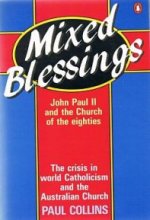 A professional writer almost always needs a good literary agent. They are not just your (free) psychologist/counsellor when things are bad. They will also tell you the truth about your ideas and your writing, and the more honest they are, the better for you. Although they will take a small percentage of your earnings (15% is the usual fee) they will also make a lot more money for you than you could earn yourself. More importantly, they will look after your interests in often complex and difficult contract negotiations with publishers and other distributers and users of your work. Writers are usually isolated individuals and let me assure you, you need someone on your side. A writer with a good agent like mine (Mary Cunnane of the Mary Cunnane Literary Agency) is indeed blessed.
A professional writer almost always needs a good literary agent. They are not just your (free) psychologist/counsellor when things are bad. They will also tell you the truth about your ideas and your writing, and the more honest they are, the better for you. Although they will take a small percentage of your earnings (15% is the usual fee) they will also make a lot more money for you than you could earn yourself. More importantly, they will look after your interests in often complex and difficult contract negotiations with publishers and other distributers and users of your work. Writers are usually isolated individuals and let me assure you, you need someone on your side. A writer with a good agent like mine (Mary Cunnane of the Mary Cunnane Literary Agency) is indeed blessed.
Many people think “they have a book in them”. This may or may not be true, but if you do get around to tackling the task of writing non-fiction do it professionally so that you can be proud of the product that you produce.
As I said, my first book was Mixed Blessings. It was published by Penguin Books in Melbourne in 1986. It attempted to give a comprehensive view of the state of the world church following the Second Vatican Council and after eight years of the John Paul II papacy. It was written to inform Australians about modern Catholicism in preparation for the visit of John Paul II to Australia.
The book was widely reviewed with an extract published in the Australian edition of Time magazine. Reviewer Edmund Campion said that the chapter on the Second Vatican Council was the best comprehensive account of the Council that he had read anywhere. The book went into a second printing and, although out of print now, is still held by many libraries in Australia and extracts are still often copied for students. It has had considerable influence both among Catholics and the wider community.
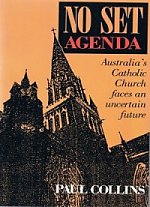 The next book was No Set Agenda published by Melbourne’s David Lovell Publishing in 1991. It focused particularly on the state of Catholicism in Australia and predicted many of the challenges and crises that have come to pass in the Australian church. In a review for literary magazine Eureka Street the then Father Mark Coleridge (later Archbishop of Brisbane) says the book ‘has the same bitter-sweet edge’ as Mixed Blessings.
The next book was No Set Agenda published by Melbourne’s David Lovell Publishing in 1991. It focused particularly on the state of Catholicism in Australia and predicted many of the challenges and crises that have come to pass in the Australian church. In a review for literary magazine Eureka Street the then Father Mark Coleridge (later Archbishop of Brisbane) says the book ‘has the same bitter-sweet edge’ as Mixed Blessings.
While Coleridge is critical of much in the book, he concedes that it “is good on issues such as worship and its impoverishment, the need for a more cogent and contemporary apologetic, the need to recover Catholic tradition in new and imaginative ways, and the need to enter public discourse which will mean dealing with the media less timidly and more effectively.”
No Set Agenda was followed by God’s Earth. Religion as if matter really mattered.
Throughout the early-1990s I had become increasingly preoccupied with environmental and population issues resulting in God’s Earth published by HarperCollins in Melbourne and by Gill and Macmillan in Dublin in 1995. The striking sub-title Religion as if matter really mattered was inspired by the great Jesuit thinker and scientist Pierre Teilhard de Chardin and coined by my editor at HarperCollins, Kevin Mark.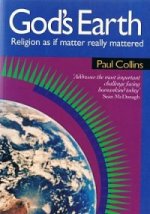 The Irish theologian and ecologist Sean McDonagh said that God’s Earth “addresses the most important challenge facing humankind today.” The book was widely reviewed including in several scientific and environmental magazines and periodicals. God’s Earth was later made into an ABC TV documentary with the author as presenter.
The Irish theologian and ecologist Sean McDonagh said that God’s Earth “addresses the most important challenge facing humankind today.” The book was widely reviewed including in several scientific and environmental magazines and periodicals. God’s Earth was later made into an ABC TV documentary with the author as presenter.
In the latter part of the 1990s I also became preoccupied with the papacy and particularly with the impact of John Paul II on the world church. Papal Power. A Proposal for Change in Catholicism’s Third millennium was published by Harper Collins Religious in Australia and by Fount, a Harper Collins imprint, in the UK and Ireland. It was this book that was denounced (the technical word is ‘delated’) to the Congregation for the Doctrine of the Faith (CDF), formerly the Roman Inquisition, the Vatican department that supervises doctrine and theological issues. The person who reported the book is unknown, although there is considerable evidence that points to the then Archbishop of Melbourne, George Pell.
One of the best reviews of the book was by Melbourne-based Jesuit theologian, Father John Wilcken, SJ in the theological periodical Pacifica (October 1997, pp 380-382) before any action was taken against the book by the CDF. Wilcken says: “Paul Collins is an engaging writer. 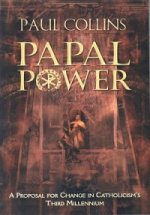 He has the skill of a journalist in presenting his material, a specialist expertise in history, and wide-ranging interest in matters of concern to our age. He is not afraid to tackle topics ... He writes as a committed person, and one who is deeply concerned about the issues he is discussing. The Catholic Church ‘really matters’; and he considers that its life and well-being are being damaged by what he calls ‘papalism’...One of the great strengths of the book is the author’s historical expertise, his extensive coverage of the history of the papacy, and the racy style with which he narrates events...Another strength, related to this, is the rich concept of tradition the author presents ... [Collins] writes of the importance of the imagination ... One of the vital ways in which faith is expressed is through symbols. Symbols do not easily fit into rational patterns, but touch what is deep in the mind and heart. An example of such symbolism is given by the author himself where he refers to a view expressed by [the theologian J.M.R] Tillard: ‘He [Tillard] argues that there is an almost sacramental sense in which Peter lives on in the See of Rome.’ My point is simply that in the life of faith, imagination and symbol are important as well as reason and appropriate structures...Power and its exercise are a problem in any human society...power is frequently misused within the Church...In this book Paul Collins calls for changes in the way the Vatican authorities exercise power. His knowledge of history and his gifts as a writer enable him to express this call with strength and conviction.”
He has the skill of a journalist in presenting his material, a specialist expertise in history, and wide-ranging interest in matters of concern to our age. He is not afraid to tackle topics ... He writes as a committed person, and one who is deeply concerned about the issues he is discussing. The Catholic Church ‘really matters’; and he considers that its life and well-being are being damaged by what he calls ‘papalism’...One of the great strengths of the book is the author’s historical expertise, his extensive coverage of the history of the papacy, and the racy style with which he narrates events...Another strength, related to this, is the rich concept of tradition the author presents ... [Collins] writes of the importance of the imagination ... One of the vital ways in which faith is expressed is through symbols. Symbols do not easily fit into rational patterns, but touch what is deep in the mind and heart. An example of such symbolism is given by the author himself where he refers to a view expressed by [the theologian J.M.R] Tillard: ‘He [Tillard] argues that there is an almost sacramental sense in which Peter lives on in the See of Rome.’ My point is simply that in the life of faith, imagination and symbol are important as well as reason and appropriate structures...Power and its exercise are a problem in any human society...power is frequently misused within the Church...In this book Paul Collins calls for changes in the way the Vatican authorities exercise power. His knowledge of history and his gifts as a writer enable him to express this call with strength and conviction.”
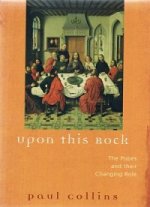 A lot of material from the research for Papal Power was subsequently used in my history of the papacy entitled Upon This Rock. The Popes and their Changing Role published by Melbourne University Press and Crossroad in New York in 2000.
A lot of material from the research for Papal Power was subsequently used in my history of the papacy entitled Upon This Rock. The Popes and their Changing Role published by Melbourne University Press and Crossroad in New York in 2000.
Reviewing Upon This Rock Professor Peter Steele, SJ said that “It is a very strange and challenging business for a writer to face the enormous parade of popes from St Peter to John Paul II and to find the appropriate tonal pitches as the centuries roll by. Collins has brought this off very well. Upon This Rock is consistently lucid, instructive, compact, engaging and well-informed, and takes with great and systematic seriousness the extremely complex entity with which it deals.” In the Australian Book Review (August 2000) Michael McGirr says that the book “is remarkably brief for the historical ground it covers and for the range of ideas it treats...Collins provides an accessible digest of the vast range of material that has been written about his subject. The whole story is there, twenty centuries of it....Even for a reader who has taken an interest in the strange fortunes of the papacy, Upon This Rock is an education. It is rich in personality and unwilling to settle for clichés. It is especially probing in dealing with the impact on Western civilization in the so-called dark ages and the experience of national identity and internationalization in the Middle Ages...Paul Collins is one of the most hopeful critics of the papacy. He has been accused of undermining the institution. The opposite is true. He concludes that the papacy has never been a ‘static institution’ and that its survival has depended on adaption and change. He wants it to breathe new life.”
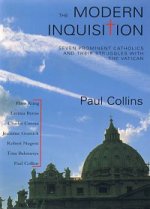 The papal/Vatican theme continued with my next book From Inquisition to Freedom published in Australia by Simon and Schuster in 2001 and in the United States as The Modern Inquisition by Overlook Press in New York in 2002.
The papal/Vatican theme continued with my next book From Inquisition to Freedom published in Australia by Simon and Schuster in 2001 and in the United States as The Modern Inquisition by Overlook Press in New York in 2002.
This book describes the Kafkaesque nightmare experienced by six prominent Catholics (Hans Küng, Lavinia Byrne, Charles Curran, Jeannine Gramick, Tissa Balasuriya, and Robert Nugent) with yours truly as the editor and seventh person) in their dealings with the Congregation for the Doctrine of the Faith (CDF). All of us had protracted negotiations with the CDF and Ratzinger. What was interesting was that not all of us were theologians; two were from the media (Lavinia Byrne and myself) and two were involved in gay ministry (Jeannine Gramick and Bob Nugent).
In preparing the book I visited and interviewed each contributor on tape, the wrote-up their responses which I then ‘translated’ into written English and sent it to them for their approval. I wrote a general introduction outlining the history of the CDF and I provided particular introductions to each piece. I found each of the interviewees “articulate, calm and intelligent and psychologically well adjusted.” They all had “a healthy sense of humour and [could] laugh at themselves, a key prerequisite in anyone called to a prophetic role.”
An English reviewer, Roy Parr says that “Apart from the scandal of the CDF and its processes, which is the focus of the book, there are fundamental issues here of authority, respect for human dignity and conscience and how an institution deals with dissent.” At the heart of the matter are the words of Sister Jeannine Gramick in response to the order to silence herself: “After finding my voice to tell my story, I chose not to collaborate in my own oppression by restricting a basic human right. To me this is a matter of conscience.”
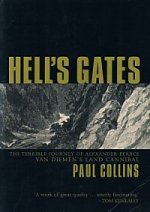 After six straight books on Catholicism my agent and I thought it was time to explore some new territory. The result was Hell’s Gates. The terrible story of Alexander Pearce, Van Dieman’s Land convict published in Melbourne by Hardie Grant Books (2002).
After six straight books on Catholicism my agent and I thought it was time to explore some new territory. The result was Hell’s Gates. The terrible story of Alexander Pearce, Van Dieman’s Land convict published in Melbourne by Hardie Grant Books (2002).
Thomas Keneally describes this book as “A work of great quality...utterly fascinating.” It book tells the true story of the Irishman Alexander Pearce and his seven convict mates who escaped from the then utterly isolated ‘place of secondary punishment’ on Sarah Island in Macquarie Harbour on the west coast of Van Dieman’s Land (Tasmania) in 1822. A place of secondary punishment was a settlement for those convicts who had committed crimes in colony while still serving the sentence for which they had been transported to the Australian colonies. Sarah Island was run by a collection of failed nobodies under the command of Lieutenant John Cuthbertson who administered a draconian regime of heavy work, floggings and punishment in exposed isolation.
The irony was sublime: one of the most unique and beautiful places on earth, which we today see as an almost heavenly natural wonderland, was seen in the nineteenth century as a place of ultimate punishment. At Sarah Island hardened men were cut off from everything that sustained their inner lives. Hell’s Gates tells the story of Pearce and his mates after their escape as they trudged across south-western Tasmania, some of the most difficult, inaccessible and beautiful wilderness terrain in the world, now a World Heritage Area. It is also a story of the struggle for survival and navigational skills of the highest order. When food ran out the men turned to cannibalism. Only one man survived to get back to the ‘settled districts’, Alexander Pearce. After he was eventually recaptured he told a story of murder and cannibalism, but was not believed by the authorities. A psychopath, liar and drunk, Pearce was eventually hung for murder after he killed and ate parts of another man with whom he had escaped a second time from Sarah Island. While he is the focus of the story, my real intention was to talk about the south-west of Tasmania and to remind readers of the sheer beauty and vulnerability of this glorious place. The real hero of this story is the extraordinary landscape of South-Western Tasmania, one of the last great tracts of cool temperate rainforest left on earth.
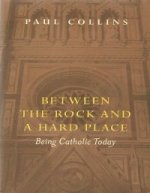 With my next book I returned to Catholicism and theology. Published in 2004 Between the Rock and a Hard Place. Being Catholic Today (Sydney: ABC Books) took me back to faith and religious practice, but I certainly didn’t abandon the environment with a whole chapter devoted to ‘Catholicism and Ecology’ (pp 109-145).
With my next book I returned to Catholicism and theology. Published in 2004 Between the Rock and a Hard Place. Being Catholic Today (Sydney: ABC Books) took me back to faith and religious practice, but I certainly didn’t abandon the environment with a whole chapter devoted to ‘Catholicism and Ecology’ (pp 109-145).
The Rock book was followed by God’s New Man. The Election of Benedict XVI and the Legacy of John Paul II (2005). I had been in Rome for the papal election in April 2005 and Louise Adler of Melbourne University Press had commissioned a book on the new pope. Thank goodness it was Joseph Ratzinger; there was a lot of material readily available on him. If it had been any other cardinal elected I would have had a difficult task to get the material researched and ready within a very tight timeline.
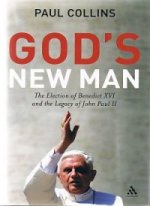 As it was we got it out in late-2005, close to, if not THE first book on Benedict XVI. It was published simultaneously by Continuum in London and New York.
As it was we got it out in late-2005, close to, if not THE first book on Benedict XVI. It was published simultaneously by Continuum in London and New York.
In a review in The Age (9 October 2005) Berney Zwartz described the book as a “generous-Spirited appraisal”. “I say generous because Collins...was hounded by the CDF under the autocratic Ratzinger, but this does not colour his discussion...Indeed the book is intelligent, perceptive and readable – much more insightful than a similar book by the much-admired American Vatican-watcher, John Allen.” Zwartz continued that I was “cautiously optimistic about Benedict, as an intelligent, cultured and sophisticated man who understands some of the weaknesses of the previous pontificate, who will take a humbler role, who may yet decentralize the church a little and reshape the Vatican bureaucracy...Collins thinks Benedict’s obsession with relativism (or post-modernism) reflects his weakness as a theologian rather than a historian and the new Pope doesn’t understand cultural contexts well enough.” Clearly some of my predictions were right – and some were quite wrong.
Another review in the Jesuit magazine Madonna says that “The strengths of God’s New Man lie in Paul Collins' ability to write simply and briefly of fairly complex issues, and in the clear viewpoint which he adopts. He is an intelligent and well-informed writer.” The book was also reasonably well received by overseas reviewers.
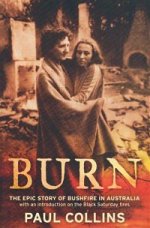 The pope book was followed by Burn. The Epic Story of Bushfire in Australia. The first thing I learned from Burn (Sydney: Allen & Unwin, 2006 and reprinted by Scribe in Melbourne in 2009) was that the ‘culture wars’ around bushfires in Australia are even more heated (if that’s the right word) than they are even in the Church. Burn was the product of my own experience. My wife Marilyn and I had bought a bush block with an old jerry-built house on it near Jindabyne in the magnificent Snowy Mountains in November 2002 and it was completely burned out in late January 2003. I then went looking for history of bushfire in Australia and found that there was none. So I decided to write one myself. After two years of research, mainly in the newspaper files of the National Library of Australia, and after visiting all of the bushfire prone landscapes in Australia – and there are a lot of them all over the continent – I produced Burn. It is very pro-green and critical of many attitudes toward fire, especially in rural communities, and it questions much about Aboriginal fire.
The pope book was followed by Burn. The Epic Story of Bushfire in Australia. The first thing I learned from Burn (Sydney: Allen & Unwin, 2006 and reprinted by Scribe in Melbourne in 2009) was that the ‘culture wars’ around bushfires in Australia are even more heated (if that’s the right word) than they are even in the Church. Burn was the product of my own experience. My wife Marilyn and I had bought a bush block with an old jerry-built house on it near Jindabyne in the magnificent Snowy Mountains in November 2002 and it was completely burned out in late January 2003. I then went looking for history of bushfire in Australia and found that there was none. So I decided to write one myself. After two years of research, mainly in the newspaper files of the National Library of Australia, and after visiting all of the bushfire prone landscapes in Australia – and there are a lot of them all over the continent – I produced Burn. It is very pro-green and critical of many attitudes toward fire, especially in rural communities, and it questions much about Aboriginal fire.
The book was widely reviewed. Considerable controversy was stirred up, much of it ill-informed. There was a thorough and far from uncritical review in the Australian Book Review (December 2006) by environmental historian Tom Griffiths.
Another interesting review appeared in Time magazine (9 October 2006).
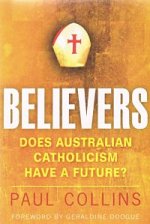 Burned, so to speak, by the controversy over bushfire, I retreated to safer ground and to a topic I knew well in Believers. Does Australian Catholicism have a Future? It was published by UNSW Press in Sydney in 2008.
Burned, so to speak, by the controversy over bushfire, I retreated to safer ground and to a topic I knew well in Believers. Does Australian Catholicism have a Future? It was published by UNSW Press in Sydney in 2008.
Believers received good reviews such as this in Catholic Education: A Journal of Inquiry and Practice (14/4/2011), pp 271-273) (excerpt):
Overall, this book offers a well-balanced, critical, and contemporary "snapshot" of the Catholic Church in Australia, drawing particular attention toward the challenges this religion currently faces. Collins makes effective use of current research, statistical analyses, and the opinions of several esteemed "experts" to support his incisive and carefully constructed arguments. However, the author's arguments call for solutions that conservative Catholics will find confronting, and potentially offensive. Such solutions advocate married clergy, the ordination of women, and the creation of a more localized, "genuine" approach toward pastoral leadership. These attributes combine well to render Believers a compelling, engaging, and useful resource for a wide audience: teachers and students of secondary and tertiary institutions
Barney Zwartz in The Age (21/708) says: “Collins is an excellent communicator, ironic by nature, thoughtful, very well-informed and a meticulous and detailed researcher. He writes as an insider, with a good knowledge of how the church works, but also with a measure of detachment. He has long been a leading spokesman for the more progressive group of Australian Catholics ... What will make this book hard to ignore are the facts and figures and concrete examples.”
But the simple fact is the book was ignored. Bishops and church administrators have long experience ignoring what doesn’t suit them. Facts, figures and concrete examples have no influence with them whatsoever. If a reality does not fit their agenda, it doesn’t exist. They have absolutely no sense of responsibility to the body of the faithful let alone any feeling of accountability for their administration of the church. The words of the pretentious Monsignor George Talbot de Malahide responding to John Henry Newman’s July 1859 essay On Consulting the Laity in Matters of Doctrine still ring true today: ‘“What is the province of the laity?” he asked. And answered his own question: “To hunt, to shoot, to entertain.”’ Many Australian bishops act as if that were still true. In a similar vein Bishop William Bernard Ullathorne of Birmingham imperiously asked Newman: “Who are the laity?” Newman answered that “the church would look very foolish without them.”
Barney Zwartz concluded his review of Believers: “If Catholicism can recapture the sense that it reflects the integrity of God and the gentleness of Christ it will still flourish, Collins argues. The future of such an Australian church would see it revitalized but smaller.”
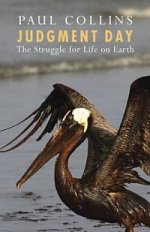 My last book before The Birth of the West was Judgment Day. The Struggle for Life on Earth (Sydney: UNSW Press and New York: Orbis, 2010).
My last book before The Birth of the West was Judgment Day. The Struggle for Life on Earth (Sydney: UNSW Press and New York: Orbis, 2010).
Hans Küng commented that in Judgment Day “Paul Collins presents the political, economic, scientific, and spiritual aspects of the ecological crisis convincingly and brilliantly” and Sean McDonagh said: “A courageous book. Paul Collins deploys his considerable skills as a historian, theologian, and journalist to convince the reader of the magnitude of the crisis now threatening the earth.”
In an interesting review in The Australian newspaper (9 October 2010) writer John Birmingham contrasts Judgment Day with a parallel book by Australian-of-the-Year Tim Flannery. Interestingly Flanney’s book has an almost theological title Here on Earth. An argument for Hope. You can find the review below.
Some months later on 30 January 2011 ABC Radio National’s Encounter broadcast a discussion between Tim Flannery and myself on our different approaches to the environmental crisis in a program entitled “Something Happened to Darwin”. Our discussion is almost theological. You can get an audio copy of the program on the RN website.
A full printed script is also available at that web site. Here is The Australian review.
LET THERE BE LIGHT
By John Birmingham
Two leading thinkers explore the moral dimensions of the climate debate, writes John Birmingham
Here on Earth: An Argument for Hope
By Tim Flannery. Text Publishing, 316pp, $34.95
Judgment Day
By Paul Collins. UNSW Press, 291pp, $34.95
AS briefly as he was resident in the Lodge, Kevin Rudd may yet be remembered by history. Not for the unexpected brevity of his tenure, not for his stewardship of the economy through the global financial crisis, and possibly not even for the apology to the Stolen Generations. Instead his legacy may be a half-remembered phrase, one that possibly still discomforts him: the declaration that climate change is “the greatest moral challenge” of our time.
As a rhetorical flourish it managed to sound simultaneously overblown and hollow, enraging sceptics and deniers while inevitably disappointing believers and activists when the government's actions fell well short of Rudd's grandiose words. And yet, just a short time later, we find the global debate over the extent of damage done to the biosphere by human development being recast as a moral dialogue, as opposed to a purely economic, political or scientific one.
Of course there has always been a moral and ethical component to questions of development and the exploitation and despoiling of the natural world it entails, but the immorality of destruction was often assumed, and if it was to be debated, that debate was framed in terms of reasons, excuses and justifications for the damage done. The ethics of destructive, unlimited development, or biocide, to borrow an increasingly voguish term, have quickly colonised a new niche -- a thoroughly modern marketer would almost certainly insist on calling it an ecology -- in the contested realm of climate change.
Climate change, however, barely does justice to the scope of the changes at issue. As Tim Flannery tries to impress upon his readers in Here on Earth: An Argument for Hope, man's impact is not limited to changes in the weather, as threatening and potentially catastrophic as they might be. Heavy metals, poisons, greenhouse gases, radioactive toxins: we have all but saturated the planet with them, at the same time as we have ravaged the forests, emptied the seas and killed off whole species not just to feed, clothe and shelter ourselves, but to do so in an increasingly luxurious but wasteful and morally reprehensible style.
For Flannery and Catholic theologian Paul Collins, “climate change” is a shorthand reference to a whole complex of problems arising from mankind's belief, evident across cultures and through time that the world exists purely for us. As a theologian, Collins is even more comfortable than Flannery the scientist in making some very stern moral judgments about this. In the opening pages of Judgment Day he promises that those of us born after World War II “will be among the most despised and cursed generations in the whole history of humankind”. And if that rhetoric isn't strong enough to make his point, Collins goes on to call for the CEOs of fossil energy companies to be tried for high crimes against humanity and nature. They are, he writes, “grossly selfish and fundamentally evil people”.
As rhetoric, it is inflammatory in a way not seen in mainstream discourse for many years. Neither Flannery nor Collins is a bomb thrower, however. Their intent is undeniably revolutionary, for they identify an old, even ancient order that must be overthrown. But the weapons they bring to the struggle are purely intellectual.
Collins in particular impresses, perhaps because his arguments, having exploded from a standing start with accusations of evil and high treason, quickly settle down into a cooler treatise on the morality of human development, and specifically on the moral theology of the ruin we lay on the world in pursuit of that development.
The churchman has the more difficult journey ahead of him, for while Flannery can draw on the intellectual traditions of his calling with confidence -- the scientific consensus in favour of anthropogenic global warming is a consensus and it is overwhelming -- Collins is required from the very first to engage with the responsibility of his own beliefs, and of the institution in which they are manifest, for the terrible sins that have been done in their name. Perhaps because of this rod laid on his back, Collins's book ends up as the more rigorous and impressive of the two.
The concept of sin, of failing in the sight of God, is a central concern of Judgment Day, but not merely the deadly sins of lust or greed driving our rapacious appetites. It is, for a religious man, the far more serious matter of imagining ourselves as God, “the conviction that somehow we are the centre of everything, that the world was made for us alone and that we are the sum total of its meaning”; a wilful misunderstanding of our place in creation, for which Collins concedes his own faith must answer.
In Genesis, the creation myth of Judeo-Christian culture, God creates man in his own image, blesses him and says “be fruitful and multiply, and fill the earth and subdue it; and have dominion”. No single line of text, as Collins points out, has caused more discussion and dissension about the role of Christianity as an enabler for environmental pillage. The great worth of Collins's book is his refusal to shirk such responsibilities. And in doing so he finally essays a far stronger defence of Christian faith than the reflexively combative rhetoric of somebody like George Pell, who has more than once attempted to characterise the green movement as a new paganism needing to be resisted by a church militant.
By accepting that Christianity and, indeed, most religions have a case to answer for the sins committed in their name, Collins is free to explore the teleology of those sins. His refusal to dissemble or blame-shift leads him to indict his church and faith, but eventually to mitigate their sins. Environmental damage long predates Christianity with “the exploitation, exhaustion and erosion of soil, as well as deforestation” being a defining characteristic of agriculture in the Fertile Crescent up to 10,000 years ago. “As historian Simon Schama puts it, the entire history of settled (rather than nomadic) society, from the irrigation-mad Chinese to the irrigation-mad Sumerians, is contaminated by the brutal manipulation of nature.”
Having found, however, that the dominant traditions of Christian theology have been unnecessarily hostile to the natural world, it is in theology and not technology or politics that Collins places his faith. All religions can find within themselves some tradition of regarding “the natural world as the primary symbol that reveals the presence of the transcendent in earthly existence”, and in the Christian virtues of prudence, fortitude, temperance and justice Collins locates the basis for a system of ethics by which we might remake our relationship with creation. Secular humanism and rationalism, which led us to the edge of destruction, offer little in comparison because, having driven God from our moral discourse, that discourse has become difficult in secular democracy, which has “neither the ethical apparatus nor the rhetoric necessary for it”.
In his fellow theologians, on the other hand, the author finds an emergent understanding of what must be done to earn salvation. St Francis of Assisi is probably the best known of these, a man whose radical commitment to poverty and humility “overflowed into a passionate devotion to God and a love of nature”. More recently the French Jesuit priest and palaeontologist Pierre Teilhard de Chardin argued at the time of the Second Vatican Council that within all matter lies the potential for spirituality, while the American cultural historian and anthropologist Thomas Berry, a devout Catholic, made it his life's work to redress what he saw as the greatest failure of Christianity, “its inability to deal with the devastation of the planet”.
In the writings of these men, and in the guiding principles of the four Christian virtues, lies Collins's only hope for the world. Unlike Flannery, he seems to have no faith in mankind's technological ingenuity. It would be an interesting exercise to have each man critique the other's work, for while there are obvious crossovers, including on matters of ethics and morality, they part company on the old question of what is to be done.
Flannery remains a scientific enthusiast, a believer in the Enlightenment virtues of reason. Where Collins sees overpopulation as a root cause of the great evil being done to the planet, and consequently calls on Rome to abandon its obsession with curtailing birth control, Flannery can happily imagine a human population of nine billion, if only humanity could learn to act with reason. Flannery is not merely a scientist, he is also an entertainer, and so Here on Earth, an evolutionary history of ecological consciousness, is more readable and superficially engaging than JudgmentDay. He deploys fantastic imagery and eye-popping factoids with aplomb, while condensing great volumes of hard science into his text. But his enthusiasm betrays him more than once as he repeatedly overreaches.
Beginning with a visit to the home of Charles Darwin at Down House in Kent, Flannery speculates about Darwin's thoughts as he took his daily walk around the grounds. What would the implications of his theory be, Flannery imagines the famous scientist thinking, for in natural selection Darwin had uncovered “an unspeakably cruel and amoral process”. Would faith, hope and charity perish from the world when people finally knew that they issued not from godly love but simple barbarity? “Would England's early industrial society, already barbaric enough, become a place where only the fittest survived, and where the survivors believed this was the natural order?”
Appropriating Darwin's point of view in the fashion of a novelist is a powerful technique, but it’s as close to verballing a dead man as makes no difference; a dangerous choice given how contested is the theory of climate change, in the political realm if not the scientific. Such an undergraduate trick exposes Flannery to attack in the opening pages of an argument that should be compelling enough to stand on its own.
It's a pity, because he is a great storyteller and much of what he has to say is worth hearing. He brings to the most arcane topics an infectious enthusiasm coupled with a real talent for narrative and explanation. Unlike Collins he has specific remedies to recommend, marrying technological progress to ethical evolution. In the imminent and possibly unexpected convergence of the transport and energy sectors, for instance, he sees much hope, citing plans to invest huge sums of money “electrifying car parking spaces throughout Denmark”.
Ecological altruism is not necessarily the primary driver of the scheme. Instead an energy company was looking for ways to profit from its massive investment in wind farms, which generated most of their power at night. By switching the small nation's cars over to electric vehicles and charging them off peak, greenhouse gases could be cut down, but, more significantly, an expensive investment in power generating windmills could be made to pay off.
Where Collins calls for a moral revolution, Flannery pushes out another step, to what Rudd might once have called programmatic specificity, offering real-world solutions to “the greatest moral challenge” of our time.
**John Birmingham is rewriting Leviathan: An Unauthorised Biography of Sydney, and researching a history of fear.

















